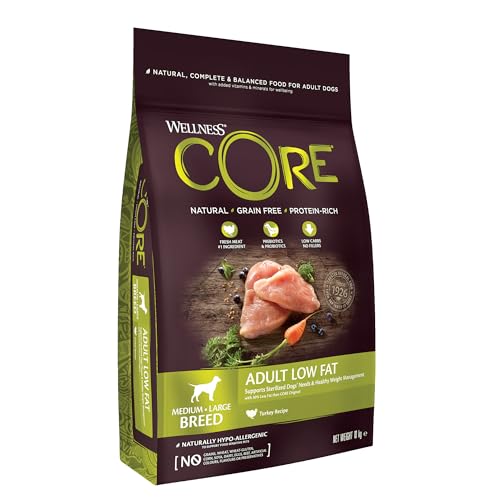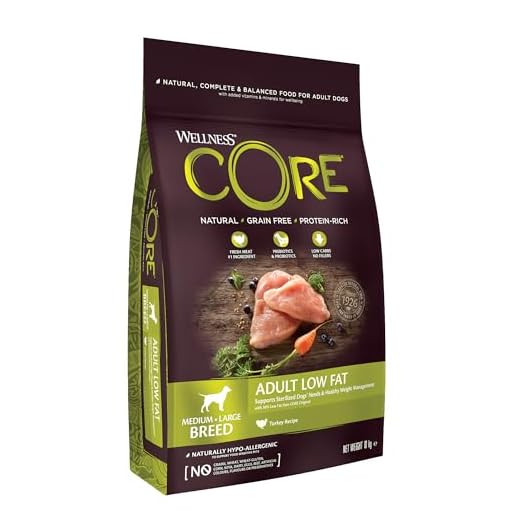




When you notice your furry friend’s belly becoming noticeably larger than usual, it’s time to take action. An abnormal swelling can indicate potential health issues that require immediate attention. Look for a firm or taut feeling in the midsection, along with signs of discomfort or distress. If your pet seems restless, is pacing, or has difficulty finding a comfortable position, don’t hesitate to consult your veterinarian without delay.
Pay close attention to other symptoms accompanying the swelling. Is there a decrease in appetite? Are they vomiting or experiencing difficulty breathing? These signs, combined with an unusually bloated belly, could signify a serious condition such as bloat or torsion, which can be life-threatening. Early intervention can make a significant difference in outcomes, so trust your instincts and seek professional advice.
In addition to physical signs, consider the behaviour of your canine companion. If they’re unusually lethargic or seem to be in pain when you touch their tummy, it’s crucial to act quickly. Take notes of any changes in their habits or mood, as this information can be invaluable to your vet. Keeping a close eye on your pet’s well-being can help ensure a swift recovery and maintain their quality of life.
Signs of an Enlarged Stomach in Canines
A noticeable increase in size around the midsection is a key indicator. The dog’s belly may appear taut and swollen, often resembling a balloon. This condition can cause discomfort, leading to restlessness or reluctance to lie down. Pay attention to any signs of distress, such as whining or pacing.
Physical examination reveals a firm or hard texture when palpating the area. You might feel a pronounced tension in the abdominal wall, which can indicate underlying issues. Observe for any unusual postures, like stretching out or adopting a position that alleviates pressure on the belly.
Increased salivation or attempts to vomit may accompany this condition. Some pets might also display signs of lethargy or a decreased appetite. If you notice these symptoms, it’s crucial to seek veterinary care immediately, as they may indicate serious health concerns, including torsion or bloat.
Visual cues may vary; some dogs will have a more rounded appearance, while others may display asymmetry. Look out for changes in behaviour, such as difficulty breathing or signs of pain when the abdomen is touched. Any combination of these signs warrants prompt attention from a veterinary professional.
Visual Signs of Abdominal Distension in Dogs
When assessing your canine companion for signs of bloating, pay attention to specific physical characteristics. A noticeably swollen midsection often appears rounded and firm, presenting an abnormal shape compared to their usual silhouette.
Look for these indicators:
| Sign | Description |
|---|---|
| Increased Size | The stomach may protrude more than normal, creating a balloon-like appearance. |
| Hardness | Gently palpate the area; a tense, rigid surface can indicate internal pressure. |
| Discomfort | Your pet may exhibit signs of unease, such as restlessness or vocalisation when the belly is touched. |
| Nausea | Watch for symptoms like drooling or attempts to vomit, signalling gastrointestinal distress. |
| Rapid Breathing | Increased respiratory rate may occur as the body struggles with discomfort. |
| Behavior Changes | Changes in appetite, lethargy, or withdrawal from usual activities can indicate a serious condition. |
It’s vital to keep a close eye on these signs. If you notice a combination of these symptoms, seeking veterinary care promptly is the best course of action. Early intervention can make a significant difference in outcomes.
Common Causes of Abdominal Distension in Canines
Recognising the underlying reasons for a swollen belly is crucial for timely intervention. One prevalent cause is the presence of excess gas, often resulting from rapid eating or certain dietary choices. If your furry friend gulps down their meals, consider using a slow feeder to help mitigate this issue.
Gastrointestinal Obstructions
Another significant factor can be gastrointestinal blockages. This might occur due to ingestion of foreign objects, such as toys or bones. If you suspect this, observe for symptoms like vomiting or lethargy, and consult a vet immediately.
Fluid Accumulation and Organ Issues
Fluid build-up can also lead to noticeable swelling. Conditions like ascites, heart disease, or liver dysfunction may cause this problem. Regular vet check-ups can help in early detection and management of these health issues. Pay attention to changes in your pet’s behaviour or appetite, as these can be warning signs of more serious conditions.
Lastly, certain breeds are predisposed to bloat, a life-threatening condition. Keeping an eye on your pet’s eating habits and recognising early signs can be lifesaving. Always consult a veterinarian if you notice significant changes in your pet’s health.
How to Differentiate Between Bloating and Weight Gain
To distinguish between excessive gas and increased body mass, observe the following indicators:
Physical Examination
- Check the sides of your pet. A swollen midsection indicates gas, while overall body shape reflects weight gain.
- Palpate the belly gently. A taut, hard feel suggests gas, whereas a softer, rounded shape may point to fat accumulation.
- Look for changes in the rib cage visibility. In cases of weight gain, ribs will be less visible compared to a healthy weight.
Behavioural Changes
- Monitor activity levels. Dogs experiencing gas may be restless or uncomfortable, while those gaining weight might show lethargy.
- Watch for eating habits. Frequent attempts to eat grass or excessive drinking can indicate discomfort from gas.
- Note any signs of distress, such as whining or pacing, which can indicate bloating rather than a simple increase in weight.
Keep track of your pet’s diet and exercise routine. Sudden changes in weight might be an indication of underlying health issues, while bloating often arises after meals. If you’re uncertain, consulting a veterinarian is advisable.
When to Seek Veterinary Help for a Distended Abdomen
If you notice a swollen belly in your pet, don’t hesitate to contact your veterinarian immediately. Time is of the essence, especially if your furry friend shows signs of discomfort or pain.
Signs Indicating Urgency
Watch for symptoms such as excessive drooling, restlessness, or attempts to vomit without success. If your canine is unusually lethargic or refuses to eat, these can be red flags. A rapid heartbeat or laboured breathing may also indicate a serious condition requiring prompt attention.
Potential Life-Threatening Conditions
Conditions like gastric torsion or internal bleeding can escalate quickly. If your companion has a swollen midsection accompanied by any of these symptoms, seek emergency care. Even if you are unsure, it is better to err on the side of caution. Your pet’s health could depend on it.
Regular check-ins with your vet are beneficial for maintaining your pet’s well-being. If you notice changes in your companion’s body shape or behaviour, don’t wait to investigate further. A quick veterinary evaluation can prevent serious complications and ensure your furry friend remains healthy and happy.
At-Home Observations to Assess Your Pet’s Condition
Check your furry friend’s tummy regularly. Look for swelling or unusual firmness. Gently press around the midsection to gauge sensitivity. If your pet flinches or shows discomfort, take note.
Daily Routine Observations
- Monitor eating habits. A sudden change in appetite can indicate distress.
- Watch for excessive drooling or lip licking, which might signal nausea.
- Note changes in behaviour, such as restlessness or lethargy.
Physical Checks
- Assess posture. A hunched back may imply discomfort.
- Observe breathing patterns. Rapid or laboured breaths could be a red flag.
- Check for any vomiting or diarrhoea, as these symptoms often accompany gastrointestinal issues.
Pay attention to food intake. A balanced diet is crucial. Research the best dog food for schnoodles to ensure your pet receives proper nutrition.
Taking these simple steps can help you catch issues early, ensuring your companion remains healthy and happy.
Treatment Options for Abdominal Distension in Dogs
Immediate veterinary attention is crucial for any canine experiencing significant swelling in the belly. Treatment plans vary based on the underlying cause. If a blockage or torsion is suspected, emergency surgery may be necessary to relieve pressure and prevent fatality.
Medical Interventions
In cases of mild gas buildup, a veterinarian might recommend medications to relieve discomfort. Antacids or simethicone can help reduce gas. If the swelling is due to fluid accumulation, diuretics may be prescribed to help the body expel excess fluid. Infections or inflammation may require antibiotics or anti-inflammatory drugs.
Dietary Considerations
Adjusting your pet’s diet can significantly impact their condition. Gradual changes to a low-fat, easily digestible diet may be advised. Feeding smaller, more frequent meals can also prevent excessive gas production. Always consult a vet before switching food to ensure it meets your pet’s nutritional needs.
Monitoring your furry friend’s hydration is essential. Encourage water intake, but avoid letting them gulp large amounts at once, as this can exacerbate issues. Some dogs benefit from a specialized diet designed to reduce gas and promote digestive health.
Regular exercise plays a role in maintaining a healthy digestive system. Walking your canine companion daily can help prevent bloating and encourage normal gut function.
In summary, tailored treatments involving veterinary care, dietary changes, and consistent exercise can effectively manage abdominal swelling in canines. Always consult a professional to devise the best plan for your pet’s health.
Preventative Measures to Avoid Abdominal Swelling in Canines
Regular, controlled feeding schedules can significantly decrease the risk of gastrointestinal issues. Instead of free-feeding, allocate specific meal times and adhere to them. This helps prevent overeating and reduces the chances of gas buildup.
Opt for high-quality kibble that is appropriate for your pet’s age and size. Ingredients matter; avoid foods with excessive fillers and artificial additives, as these can contribute to digestive problems.
Incorporate gradual changes to your pet’s diet. If you’re switching brands or types of food, do so slowly over a week to prevent upset stomachs. Sudden changes can trigger bloating.
Encourage your furry friend to eat slowly. Consider using slow feeder bowls or puzzle feeders. These tools can help prevent gulping, which is a common cause of gas and discomfort.
Ensure regular exercise as part of your pet’s routine. Daily walks and playtime not only maintain a healthy weight but also promote proper digestion. A physically active dog is less likely to experience digestive distress.
Monitor your canine’s behaviour closely. If you notice any signs of discomfort or unusual activity after meals, adjust feeding habits accordingly. Awareness can help catch issues early.
Avoid giving table scraps or human food, especially those high in fat or spices. Many foods that are safe for humans can be harmful or indigestible for canines, leading to abdominal issues.
Regular vet check-ups are essential. Routine examinations can catch potential problems before they escalate. Discuss any dietary changes or concerns with your veterinarian to ensure your pet’s nutritional needs are being met.
Keep your pet’s environment stress-free. Anxiety can lead to digestive problems, so provide a calm and safe space for your furry companion.
Lastly, be cautious with chew toys and bones. Monitor your canine while they chew to prevent choking or swallowing large pieces that could lead to blockages and discomfort.






